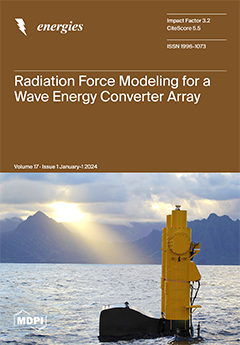This article presents the results of research on the impact of changing the cross-section of an atomizer’s flow channel, which is caused by changing the flow geometry of the passive part of the needle on the drop diameter distribution of the fuel spray. A three-hole type H1LMK, 148/1 atomizer with hole diameters,
dN, equal to 0.34 mm, is analyzed. A nozzle with a standard (i.e., unmodified) needle and three nozzles using needles with a modified profile in the flow part of the needle, marked by the code signatures 1L, 2L, and 3L, are tested. An increasing level of fuel turbulence characterizes the needles during the flow along their flow part due to the use of one (1L), two (2L), and three (3L) de Laval toroidal nozzles, respectively, obtained by mechanically shaping the outer surface of the flow part of the spray needle. The spray produced is tested using the Malvern Spraytec STP 500 device cooperating with the dedicated Malvern version 4.0. During the tests, measurements and an analysis of the spray droplet size distribution over the entire injection duration, equal to 7 ± 2 ms, are made for each nozzle. The experiment makes it possible to determine the effect of the nozzle needles’ profiles on the time distribution of the actual droplet diameters; the time distribution of the Sauter mean droplet diameters,
D[3,2]; the percentile shares of the droplet diameters
Dv (10),
Dv (50), and
Dv (90); the distribution span during the development of the spray stream; and the time distribution of the shares of the droplets with diameters belonging to selected diameter classes
D[x1−x2] in the spray. The results of the measurements of the drop diameter distribution indicate that using atomizers with a modification to the flow channel allows for an increase in the share of droplets with smaller diameters compared to the standard atomizer.
Full article





